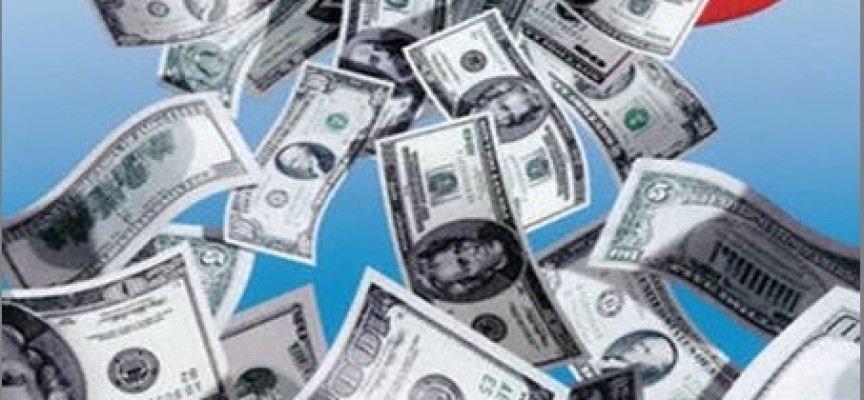With stocks rallying along with the dollar, and crude oil hitting $60, today one of the legends in the business includes a guest commentary about a region with trillions of dollars in wealth funds that is now shocking the world. This piece also covers a historic bank panic. Hopefully that is not a sign of things to come.
By Art Cashin Director of Floor Operations at UBS
December 11 (King World News) – “On this day in 1930, American savers, the Federal Reserve and a Republican President all got a nasty surprise. The banking system had been shaky for a year or two but it looked like things might finally be beginning to stabilize. That is until today.
On this day, a major financial institution, The Bank of the United States went belly up. And, with it went the savings, “in whole or in part”, of over 400,000 depositors.
The Bank of the United States has been a historically unlucky name for several institutions. The first “Bank of the United States” was proposed by no less than Alexander Hamilton. It was a privately held central bank for the United States some 125 years before the Fed was created. It was very controversial as Southerners saw it as a boon and tool of the mercantile North while the South’s main industry, agriculture, didn’t need strong banking. The bank’s charter was allowed to expire and the bank disappeared.
Without a strong central bank, however, the young government had found it very difficult to finance the War of 1812. So, Congress proposed another Bank of the United States. This one succeeded for a while until Andrew Jackson and his Southern coalition determined to kill it. They succeeded and the result, many feel, was the Panic of 1837, one of the worst economic contractions in American history.
Now back to the other Bank of the United States.
In the early 1900’s, immigrants were pouring through Ellis Island and onto the streets of New York. A fellow immigrant and a very successful garment merchant realized they would need a place to put their meager earnings and savings. Perhaps to convey an image of governmental security or even an implied guarantee, he named his enterprise, “The Bank of the United Sates”.
As previously noted, when it went under it had over 400,000 depositors. They all began to scramble for money anywhere which tended to strain the other banks. The large New York garment industry was pushed to the edge and merchants desperately sought credit. Lines began to form at other banks. Soon the nation was sinking into the Depression.
To celebrate meet a couple of auditors at the Olde Resolution Trust Lounge. Have a few perfect Rob Roys and explain that these days’ surprises are federally reserved for things like birthdays – not economic events. Crises, like dinosaurs, are now ancient history. Then have several more sips.
The U.S. stock market had its own version of a run on the bank yesterday. And, like a run on the bank, it got worse as time went on and was more than a little ugly at the end.
Oil Worries Widen Into High Yields And Financials – Wednesday's opening did not portend the carnage that would follow.
The Dow looked to open down a little over 50 points, primarily on softness in its two key energy stocks – Exxon and Chevron. Oil was weak again but not in freefall. Japan had been down, of course, but most other markets were relatively stable.
The opening went as expected but the selling in crude seemed to intensify and that seemed to lead bids being cancelled in the stock market.
Stocks traded lower in that buyers boycott and the Dow settled down in the -150 point range.
Given Tuesday's smart rebound, traders assumed an emboldened "buy the dip" crowd might show up in mid-morning. There was some nibbling around 10:50 but it never caught fire and stocks churned sideways into early afternoon.
Then around 1:30, Brent crude threatened to break below $64. That led to increased selling in equities.
That selling caused the Dow to move below Tuesday's low. Breaking the prior day's low seemed to open a trapdoor and soon we were down 220 points.
Things did not get any better as the afternoon wore on. The market on close orders started neutral but, in the final half hour, the indications turned absolutely ugly.
At 3:45, they were looking 90% to the sell side with $1.8 billion to sell on balance. That led to the market closing within a hair of the day's lows. Not very pretty at all.
He's Baaaack! – Depending on which definition you use, the stock market has experienced somewhere between 5 and 7 Hindenburg Omens in the last eight trading sessions.
As you may recall, proponents claim we have never had a market crash without the presence of a Hindenburg Omen. Opponents will point out that we have had Hindenburg Omens with no crashes. So, rather than a signal for a crash, the Omen suggests conditions that could permit a crash may be present. Got it?
Oil As A Weapon – The incomparable Don Coxe, one of the very best observers and analysts of global commodities recently wrote this:
……. Most observers thought the Organization of Petroleum Exporting Countries (OPEC) would cut its production to protect its members’ incomes and slash frackers’ profits. If these were ordinary times in the Mideast, that forecast would have been accurate.
But this has been a year of major geopolitical crises in the region, and the Sunni Arab oil states have found themselves facing grim challenges.
By October, it was becoming clear to us and others that Saudi Arabia and its Gulf Emirate allies could not afford to continue petro-pricing business as usual with sectarian wars exploding out of control, threatening the entire region.
In particular, they were infuriated that the Shia regime in Syria was being propped up by Iran and Russia. Moreover, Iran seemed to be getting closer to becoming a nuclear power with each month. Amid the chaos, the Islamic State terrorists had suddenly become a formidable challenge to the entire region, and they were getting increasing revenues from oil properties they had seized.
The Saudis had long since concluded that U.S. President Barack Obama was a weak reed – at best. So, we believe they felt forced to stop the cash flows to Syria, Iran and the Islamic State and deter Russia. They decided to keep pumping oil, allegedly to fight fracking, but also to weaken their regional foes.
No one knows how long this strategy will continue. The Gulf States have trillions in sovereign wealth funds to back their budgets.
Our pal Bob Hardy, who writes the invaluable Geostrat blog has been talking about oil as a weapon for a longtime – going back to a meeting between Prince Bandar and President Putin late last year. While the meeting was private, sources say the meeting turned contentious when Putin refused to ease back on support for Syria and Iran in exchange for Saudi "help" in maintaining or even boosting the oil price.
The reason the Saudis didn't move earlier may have been "market conditions". They needed U.S. fracking supplies to build to a level that would make destabilizing the equilibrium very easy and not require a large and obvious production boost.
Consensus – ECB's TLTRO drew ho-hum response. Greece in near freefall again. Seasonals begin to turn better as week ends and get even more bullish next week. Stay wary, alert and very, very nimble. Out tomorrow – have a great weekend.
IMPORTANT – KWN has many more interviews being released today.
© 2014 by King World News®. All Rights Reserved. This material may not be published, broadcast, rewritten, or redistributed. However, linking directly to the blog page is permitted and encouraged.
The audio interviews with John Embry, Gerald Celente, Rick Rule, Bill Fleckenstein, Ben Davies, Greyerz-Turk-Stamm, David Stockman, William Kaye, Dr. Paul Craig Roberts, Andrew Maguire, Eric Sprott, Rick Santelli, John Mauldin and Marc Faber are available now. Other recent KWN interviews include Jim Grant and Felix Zulauf — to listen CLICK HERE.







